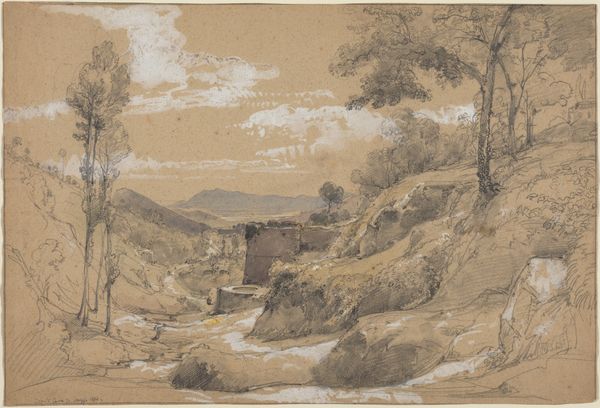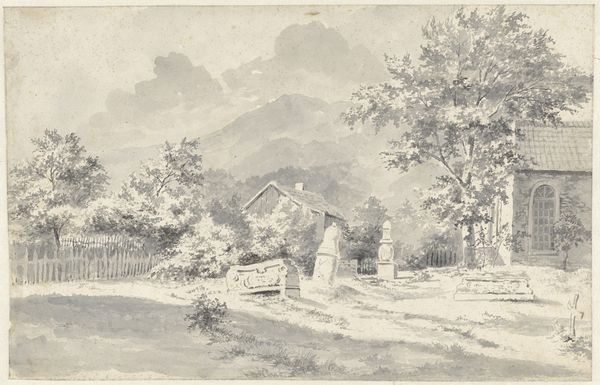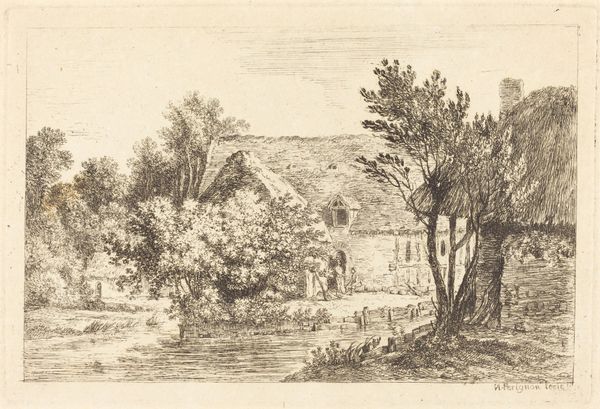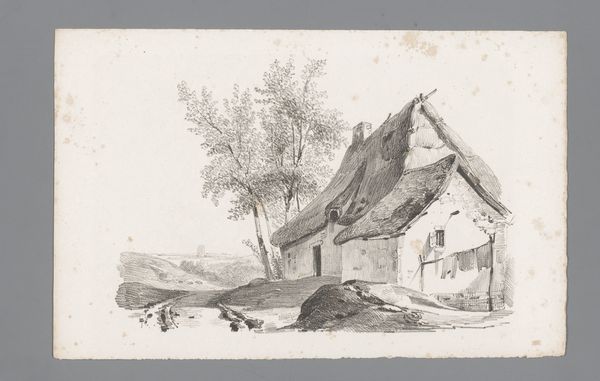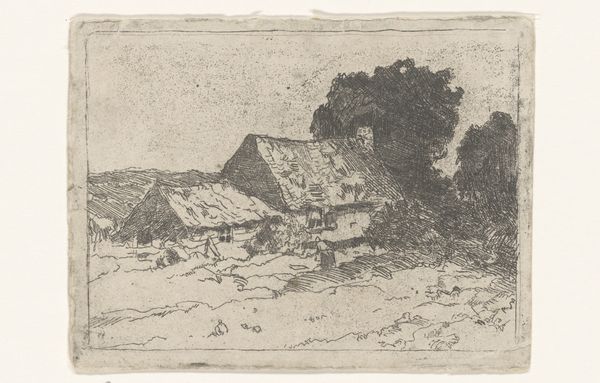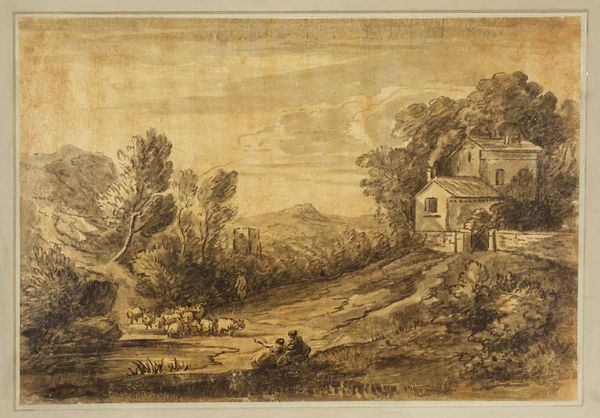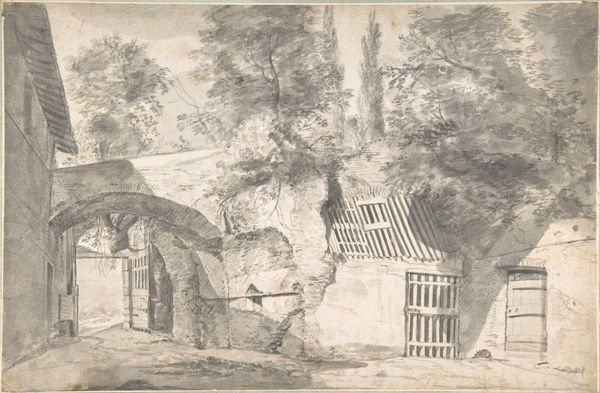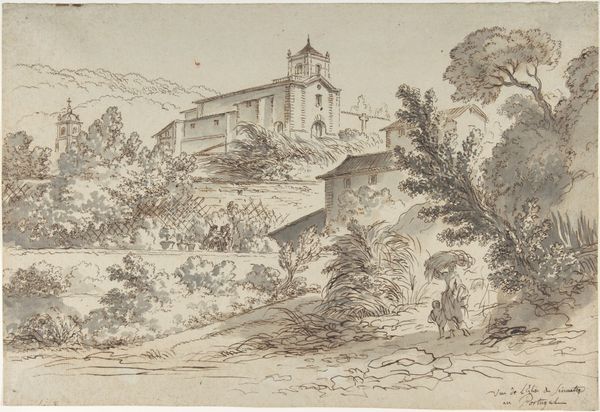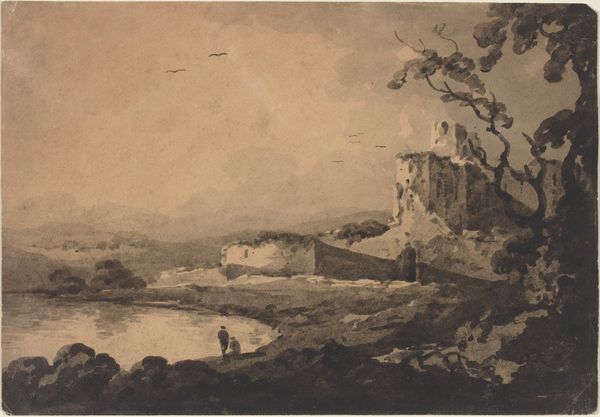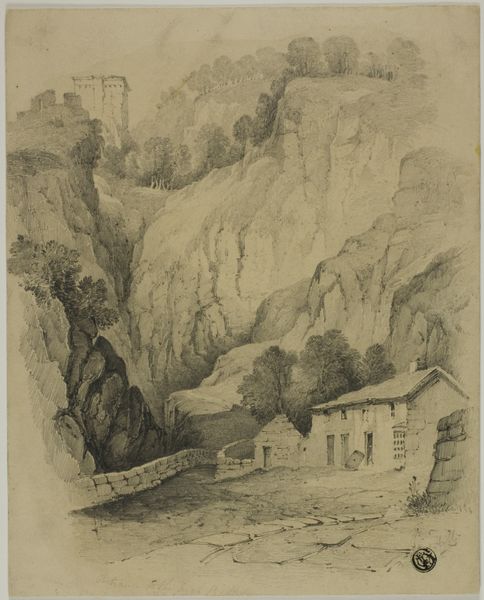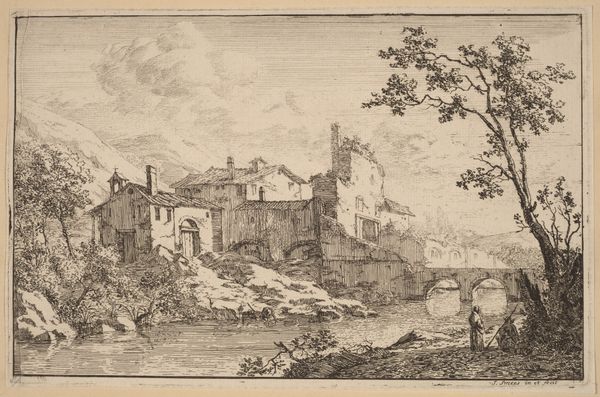
A House on a Hillside in a Southern Landscape 1640 - 1673
0:00
0:00
drawing, print, etching
#
drawing
#
dutch-golden-age
# print
#
etching
#
pencil sketch
#
landscape
#
etching
#
watercolor
Dimensions: sheet: 7 5/8 x 12 3/16 in. (19.4 x 30.9 cm)
Copyright: Public Domain
Curator: Here we have Adam Pynacker's "A House on a Hillside in a Southern Landscape," created sometime between 1640 and 1673. It’s a fascinating example of his exploration of light and form through etching. Editor: My immediate thought is that this work embodies a sort of austere tranquility, with that imposing rock face balanced against the delicate house. The greyscale values give it a sense of somberness, a kind of isolated rural labor perhaps? Curator: It's insightful to consider the potential link to labor. What I find compelling is how Pynacker engages with ideas of travel, commerce and identity. It depicts this very picturesque setting and yet his identity as a Dutch painter cannot be extricated from this "Southern Landscape" as its titled. He is drawing upon these visual and aesthetic resources to then reproduce them for consumption and distribution. Editor: It makes me think about the means of production in 17th-century printmaking and etching specifically. The process of creating and distributing these images was tied to systems of trade and distribution that impacted access and influence. It also points to the manual skills and techniques that were valued commodities within the Dutch Golden Age art world. Curator: Precisely! The landscapes Pynacker created often played into Dutch aspirations of empire and notions of the exotic “other”. It represents both a yearning and a claiming of the lands. How does this work both highlight, and perhaps obfuscate the politics of landscape during the colonial expansion of the period? Editor: The tension between its tranquil appearance and complex history reminds us how an artist’s output should also include discussion on consumption, dissemination, and access, shifting our analysis beyond the aesthetic properties. Curator: It’s such an apt reminder that we have to constantly think about how power operates through these idyllic landscapes and the socio-political implications inherent in representation itself. Editor: Right, art’s not made in a vacuum; it’s materially connected. Considering the broader context helps to give perspective on how artistic practices both impact and reflect labor and modes of production in its specific moment.
Comments
No comments
Be the first to comment and join the conversation on the ultimate creative platform.
